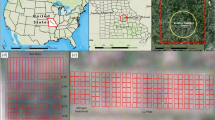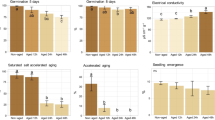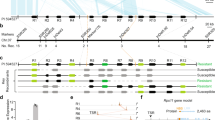Abstract
This novel Soybean Composition Database from the AFC-NMR & NIR Spectroscopy Facility of the College of ACES at the University of Illinois at Urbana includes more than 12,000 NIR measurements on soybeans from the International Soybean Germplasm Collection, such as those received from Peking at the National Soybean Collection.Excel files (.xls) of our novel spectroscopic data are currently available for all 80,000 + NIR and FT-NMR measurements; such data are made available from an ultra-fast and secure supercomputer server utilizing the current version of the Scientific-Linux OS-based software.A detailed account is also presented of our high-resolution nuclear magnetic resonance (HR-NMR) and near infrared (NIR) calibration models, methodologies and validation procedures, together with a large number of composition analyses for soybean seeds. NIR calibrations were developed based on both HR-NMR and analytical chemistry reference data for oil and twelve amino acid residues in mature soybeans and soybean embryos. Moreover, this is our first detailed report of HR-NMR determinations of amino acid profiles of proteins from whole soybean seeds, without protein extraction from the seed. It was found that the best results for both oil and protein calibrations were obtained with a Partial Least Squares Regression (PLS-1) analysis of our extensive NIR spectral data, acquired with either a DA7000 Dual Diode Array (Si and InGaAs detectors) instrument or with several Fourier Transform NIR (FT-NIR) spectrometers equipped with an integrating sphere/InGaAs detector accessory. In order to extend the bulk soybean samples calibration models to the analysis of single soybean seeds, we have analized in detail the component NIR spectra of all major soybean constituents through spectral deconvolutions for bulk, single and powdered soybean seeds. Baseline variations and light scattering effects in the NIR spectra were corrected, respectively, by calculating the first-order derivatives of the spectra and the Multiplicative Scattering Correction (MSC). The single soybean seed NIR spectra are broadly similar to those of bulk whole soybeans, with the exception of minor peaks in single soybean NIR spectra in the region from 950 to 1,000 nm. Based on previous experience with bulk soybean NIR calibrations, the PLS-1 calibration model was selected for protein, oil and moisture calibrations that we developed for single soybean seed analysis. In order to improve the reliability and robustness of our calibrations with the PLS-1 model we employed standard samples with a wide range of soybean constituent compositions: from 34% to 55% for protein, from 11% to 22% for oil and from 2% to 16% for moisture. Such calibrations are characterized by low standard errors and high degrees of correlation for all major soybean constituents. Morever, we obtained highly resolved NIR chemical images for selected regions of mature soybean embryos that allow for the quantitation of oil and protein components. Recent developments in high-resolution FT-NIR microspectroscopy extend the NIR sensitivity range to the picogram level, with submicron spatial resolution in the component distribution throughout intact soybean seeds and embryos. Such developments are potentially important for biotechnology applications that require rapid and ultra- sensitive analyses, such as those concerned with high-content microarrays in Genomics and Proteomics research. Other important applications of FT-NIR microspectroscopy are envisaged in biomedical research aimed at cancer prevention, the early detection of tumors by NIR-fluorescence, and identification of single cancer cells, or single virus particles in vivo by super-resolution microscopy/ microspectroscopy.
Similar content being viewed by others
Article PDF
Author information
Authors and Affiliations
Rights and permissions
About this article
Cite this article
Baianu, I., You, T., Guo, J. et al. Soybean Composition Database from NIR, NMR and GC-MS Analyses- (v.3). Nat Prec (2011). https://doi.org/10.1038/npre.2011.6201.3
Received:
Accepted:
Published:
DOI: https://doi.org/10.1038/npre.2011.6201.3



